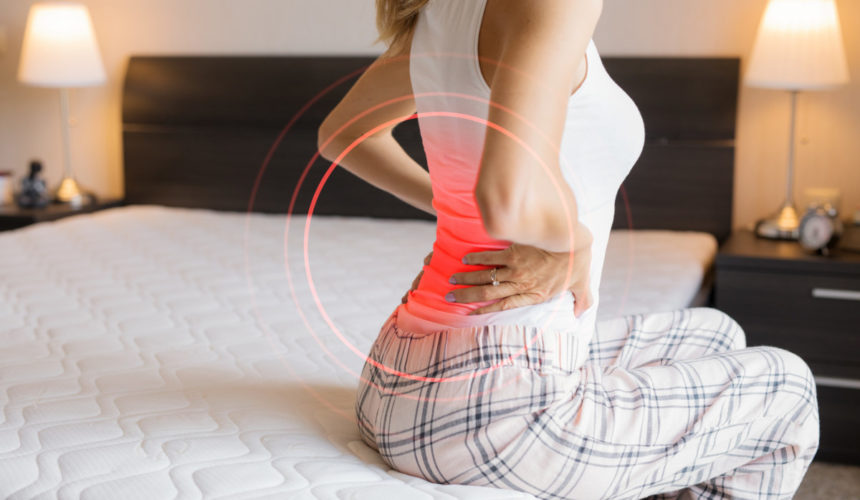Did you know that 65 million US adults have recently reported back pain? While back pain can certainly be the result of backbreaking labor or an injury, another culprit you may not expect may be causing or making your back pain worse. Among them, the way you sleep.
So if you are experiencing back pain, one of the first things to do is evaluate your sleep patterns. A different sleep position could give you significant relief. It might also give you a reason to schedule an appointment with a doctor if the pain continues.
We’ve got the best sleeping position for reducing back pain, and why they work.
1. Fetal Position
The fetal position is great for people with a herniated disc. This condition happens when the rubbery cushions found between vertebrae become compressed and off center. They may even leak a spinal nerve-irritating fluid.
This back-preferred sleeping position specifically reduces the pressure on these rubbery discs, giving them some time to rest at night while you do.
2. Side Sleeping with a Pillow Between Your Knees
In the US, side sleeping is a very common sleeping position. But this alone does not necessarily help with back pain and may even exacerbate it. However, if you put a thin pillow between your knees, the spine aligns with the hips and pelvis. So you feel less pain.
3. Stomach Sleeping with a Pillow
Stomach sleeping is actually terrible on your back as it curves the spine down. But when done in a spine-friendly way, it can relieve back pain.
While sleeping on the stomach, place a pillow underneath your lower abdomen and pelvis. Some people prefer no head pillow in this position. Do what feels most comfortable.
Similar to the fetal position, this reduces the pressure put on your spinal disc and is most beneficial for those with degenerative disc disease.
4. Back Sleeping with a Knee Pillow
This one is not ideal for people who have sleep apnea or snore as it may increase symptoms. That’s why it’s great that several back-saving positions exist.
Lie flat on your back and put a pillow under your knees to support the curve in your lower back. The pillow also acts as a slight deterrent, so you are less likely to turn on your side. And if you do, you’re more likely to take the pillow that’s already there and slide it between your knees, assuming another back-friendly position.
Back sleeping with or without a pillow distributes your weight so that shoulders, elbows, hips, and back feel less pain all around.
When to See a Doctor
Most back pain will relieve itself within four to six weeks with small changes to exercise, work, sleep, or recreation routines. But back pain can also be caused by conditions like degenerative disc disease, spinal stenosis, osteoarthritis, or herniated disc.
You should generally see your doctor if one or more of these accompanies the pain:
- Tingling or numbness
- Fever
- Sudden sharp pain
- Loss of bladder or bowel function
- Lasting more than 6 weeks
- Back trauma
- Pain that keeps you up at night
- Over 70 YO
- Have a history of recurring back pain or issues
Best Sleeping Positions for Back Pain
The best sleeping position for your back pain is one that feels comfortable for you, so try out some different pillow sizes and positions, to see which gives you the most back relief.


